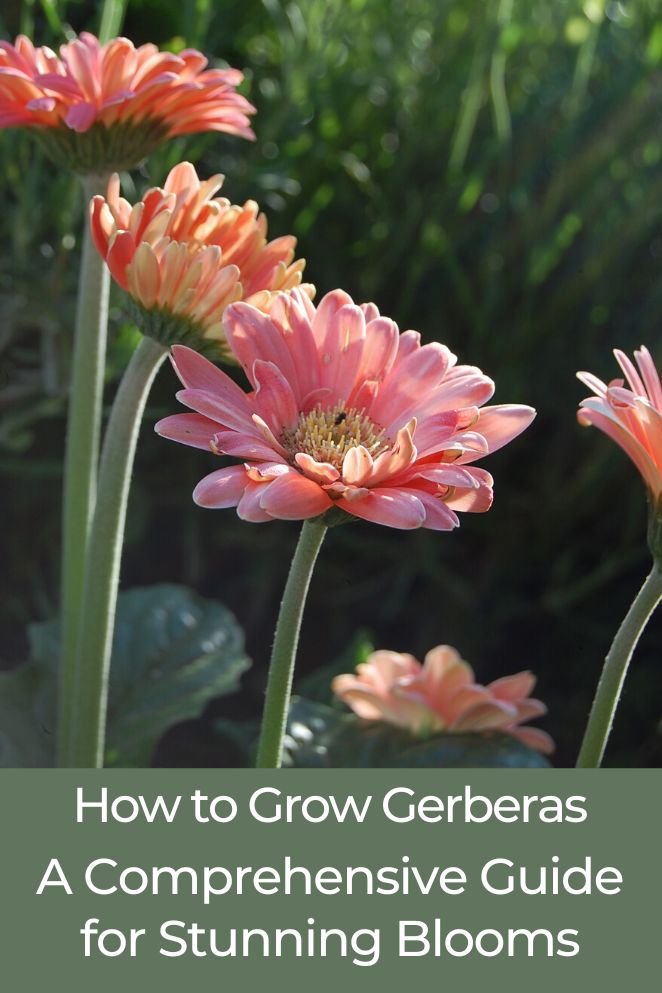
Gerberas, also known as Gerber daisies, are popular and versatile flowers that come in a wide array of colors, shapes, and sizes.
They are native to South Africa and belong to the Asteraceae family.
Gerberas are known for their large, daisy-like blooms and are widely used in floral arrangements, bouquets, and garden beds.
These cheerful flowers are available in various types, including hardy and tender varieties, each with its own unique characteristics and growing requirements.
What is a Gerbera?
Gerberas, characterized by their stunning and symmetrical flowers atop sturdy stems, are herbaceous perennials.
These plants are renowned for their vibrant colors, spanning shades of red, orange, yellow, pink, and white.
With flower diameters ranging from 2 to 5 inches, Gerberas add a captivating and standout element to gardens or floral arrangements.
Their striking appearance makes them a sought-after choice for those looking to enhance the visual appeal of their outdoor spaces or create eye-catching floral displays.
- Read also: Tips on How to grow Lemon balm
- Read also: A Guide to Desert Rose Fertilizer Care
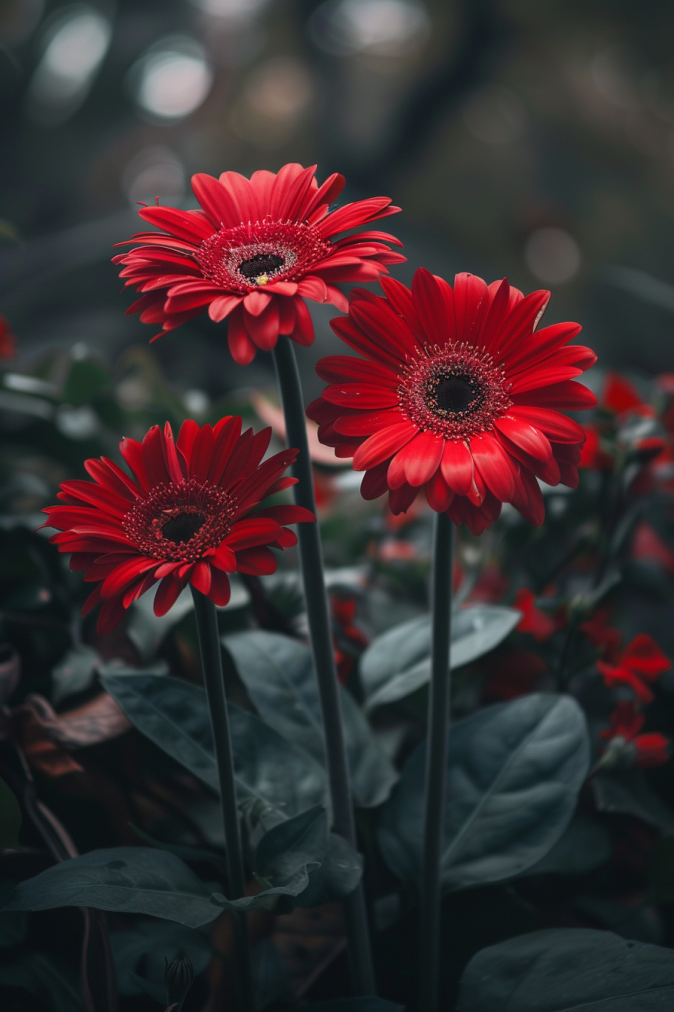
Different Types of Gerberas
There are many different types of gerberas, including:
Transvaal daisy (Gerbera jamesonii):
This is the most common type of gerbera and is native to South Africa.
It has large, daisy-like flowers that come in a wide range of colors, including yellow, orange, red, pink, purple, and white.
Mini gerberas
These are smaller versions of the Transvaal daisy, with flowers that are typically 2-3 inches in diameter.
They are perfect for growing in pots or as edging plants in flower beds.
Barberton daisy (Gerbera jamesonii ‘Barbertonia’)
This variety of Transvaal daisy has double flowers that are up to 5 inches in diameter.
They come in a range of colors, including yellow, orange, red, pink, purple, and white.
Hummingbird gerbera (Gerbera jamesonii ‘Hummingbird’)
This variety of Transvaal daisy has long, thin petals that resemble a hummingbird’s wings.
They come in a range of colors, including yellow, orange, red, pink, purple, and white.
Parrot’s beak gerbera (Gerbera jamesonii ‘Parrot’s Beak’)
This variety of Transvaal daisy has petals that are curled or twisted at the edges, resembling a parrot’s beak.
They come in a range of colors, including yellow, orange, red, pink, purple, and white.
African daisy (Gerbera jamesonii hybrids)
This is a general term for any gerbera that is not a species of Gerbera jamesonii.
African daisies come in a wide range of colors, sizes, and flower shapes.
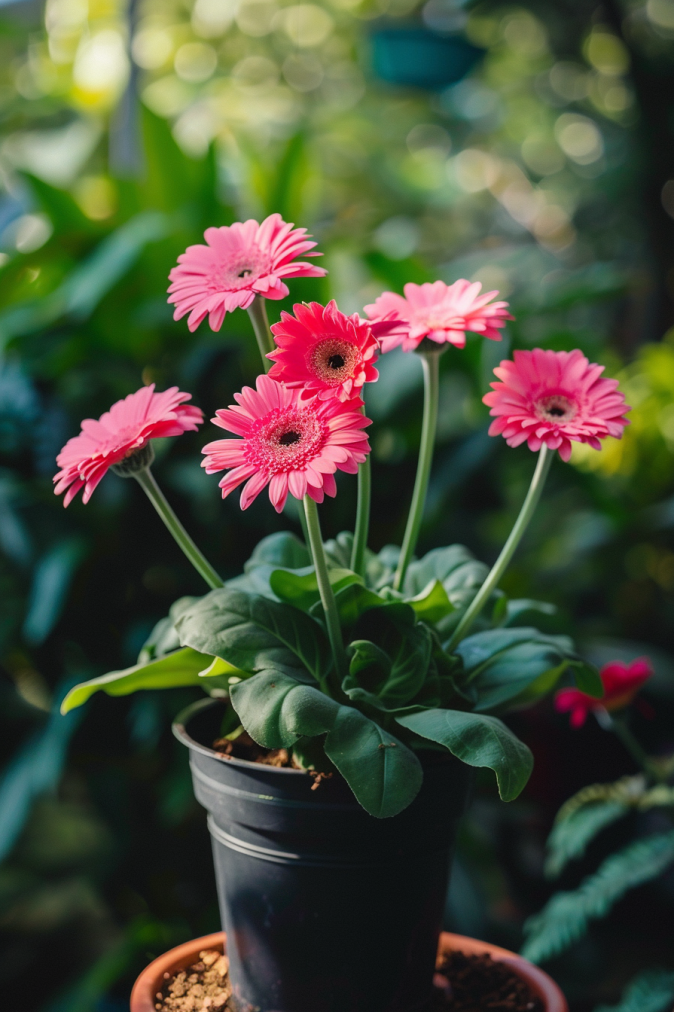
How to Grow Gerberas
Gerberas, with their cheerful faces and vibrant colors, bring joy to any garden or home.
With proper care, these stunning daisies can be easier to grow than you think.
Here’s your guide to cultivating sunshine with gerberas:
Choosing Your Gerbera
- Climate: Some gerberas are hardy perennials thriving outdoors in warmer zones (7-10), while others are tender annuals suited for pots or cooler areas.
- Types: Decide what kind of sunshine you desire. Mini gerberas add charm to borders, while larger varieties make dazzling cut flowers.
- Selection: Opt for healthy plants with vibrant foliage and unopened buds. Avoid wilted leaves or discolored flowers.
Planting for Success
- Location: Full sun (at least 6 hours daily) is key. Choose well-drained soil, amending it with compost if needed.
- Timing: Plant outdoors after the last frost in spring. For pots, any warm month works.
- Spacing: Follow package instructions, but generally leave 12-18 inches between plants for optimal airflow and growth.
- Planting depth: Gently set your gerbera so the crown (where the stems meet the roots) sits just above the soil surface. Don’t bury the crown.
Nurturing Your Blooms
- Watering: Water deeply and regularly, but avoid soggy soil. Aim for moist, not wet, conditions.
- Feeding: Use a balanced fertilizer every few weeks during the growing season, following package directions.
- Deadheading: Regularly remove spent blooms to encourage continuous flowering. Cut just above the stem node.
- Sun protection: In very hot climates, provide some afternoon shade to prevent leaf scorch.
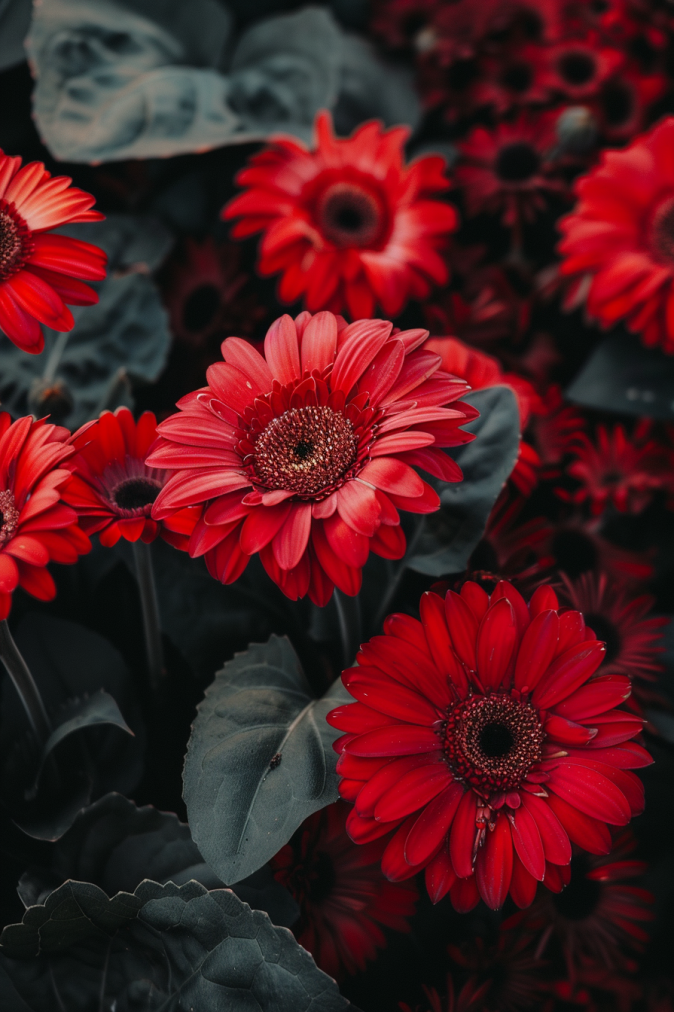
How to Care for Gerberas
Ensuring the well-being of gerberas is a straightforward process that involves a few key steps:
Watering schedule
Maintain a consistent watering schedule to keep gerberas hydrated.
These flowers appreciate well-drained soil, so water them when the top inch of the soil feels dry.
Avoid overwatering, as excessive moisture can lead to root rot.
Deadheading spent blooms
Regular deadheading is beneficial for gerberas.
Remove spent blooms by pinching them off, which not only keeps the plant looking tidy but also encourages the production of new flowers.
This practice directs the plant’s energy towards healthy growth.
Protection from pests and diseases
Guard against pests and diseases by inspecting your gerberas regularly.
Common issues include aphids and powdery mildew.
Utilize appropriate measures such as insecticidal soap for pests and fungicides for fungal problems.
Promptly addressing these issues ensures the plant’s overall health.
Ideal growing conditions
Position gerberas in full sun to promote robust growth and vibrant blooms.
Adequate air circulation is crucial to prevent issues like powdery mildew.
Ensure that the planting area allows for good airflow around the plants.
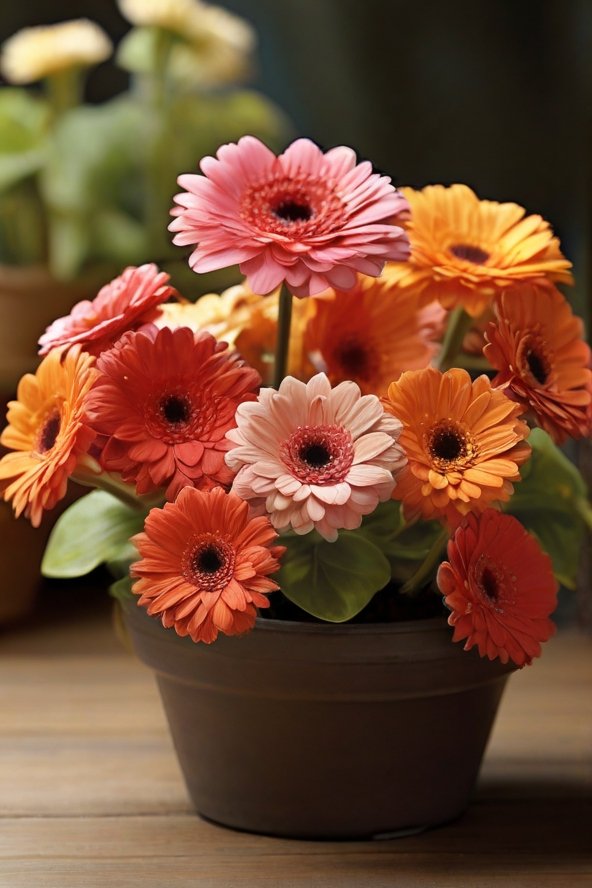
How to Propagate Gerberas
Gerberas can be propagated through three main methods: division, stem cuttings, and seeds.
Each method has its advantages and disadvantages, so the best choice for you will depend on your experience, resources, and desired results.
Division
Advantages
- Easiest and quickest method.
- Maintains the characteristics of the parent plant.
- Good for multiplying mature gerbera clumps.
Disadvantages
- Requires a mature plant with multiple crowns.
- Can be stressful for the mother plant.
Steps
- Dig up the gerbera plant carefully in spring or fall.
- Gently separate the crowns with a sharp knife or your hands, ensuring each division has roots and at least one bud.
- Replant each division in separate pots or in the garden, following proper planting instructions.
- Water deeply and keep the soil moist but not soggy.
Stem cuttings
Advantages
- Can be done throughout the growing season.
- Good for propagating named varieties.
Disadvantages
- Requires more skill and care than division.
- Not all cuttings will root successfully.
Steps
- Choose healthy, non-flowering stems with several nodes.
- Cut a stem segment 4-6 inches long just below a node with a sharp knife.
- Remove the lower leaves.
- Dip the cut end in the rooting hormone (optional).
- Plant the cutting in a pot filled with well-draining potting mix.
- Water thoroughly and keep the soil moist but not soggy.
- Cover the pot with a plastic bag to maintain humidity.
- Remove the bag once roots have formed (in 2-4 weeks).
- Once the plant is established, gradually acclimate it to outdoor conditions before transplanting.
Seeds
Advantages
- Least expensive method.
- The widest variety of gerberas available.
Disadvantages
- Requires the most time and patience.
- Seedlings may not resemble the parent plant.
Steps
- Plant gerbera seeds indoors in a well-draining starting mix 8-12 weeks before the last frost.
- Press the seeds lightly into the soil surface and mist with water.
- Cover the container with plastic wrap to maintain humidity.
- Place the container in a warm, bright location (not direct sunlight).
- Keep the soil moist but not soggy.
- Once seedlings emerge, remove the plastic wrap and provide more light.
- Harden off seedlings gradually before transplanting outdoors after the last frost.
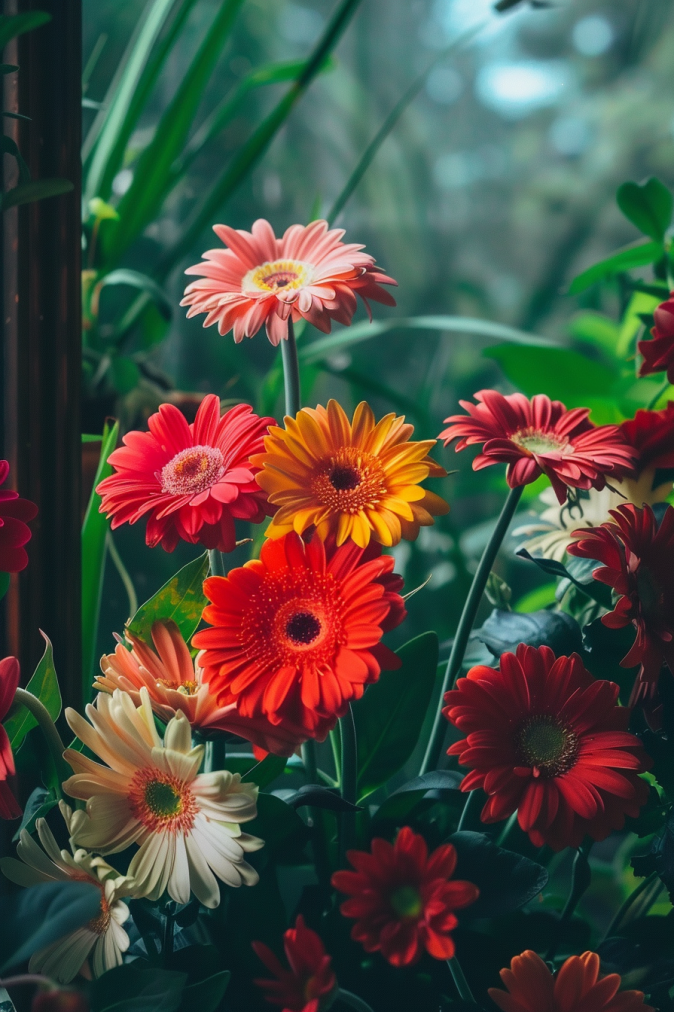
Common Challenges Faced by Gerberas
Despite their vibrant beauty, gerberas can face some challenges in their quest to flourish. Here are some of the most common issues you might encounter:
Flowering problems
- Lack of blooms: This can be caused by insufficient sunlight, inadequate fertilizer, incorrect watering (over or under), root rot, or temperature extremes.
- Small or misshapen blooms: This can be due to low light, nutrient deficiency, lack of deadheading, or incorrect spacing between plants.
- Leggy stems: This often indicates insufficient light, so try providing more direct sunlight or artificial grow lights.
Pests and diseases
- Aphids, thrips, and slugs: These pests can damage leaves and flowers. Use insecticidal soap or neem oil for natural control.
- Powdery mildew: This fungal disease thrives in humid conditions. Improve air circulation and avoid wetting the leaves.
- Botrytis blight: This fungal disease causes gray mold on flowers and stems. Maintain good air circulation and remove infected parts immediately.
Other Issues
- Leaf scorch: This can happen in hot, dry weather. Ensure proper watering and consider providing some afternoon shade.
- Root rot: This is caused by overwatering. Allow the soil to dry slightly between waterings and improve drainage.
- Yellowing leaves: This can be caused by various factors, including nutrient deficiency, overwatering, or root rot. Identify the cause and address it accordingly.
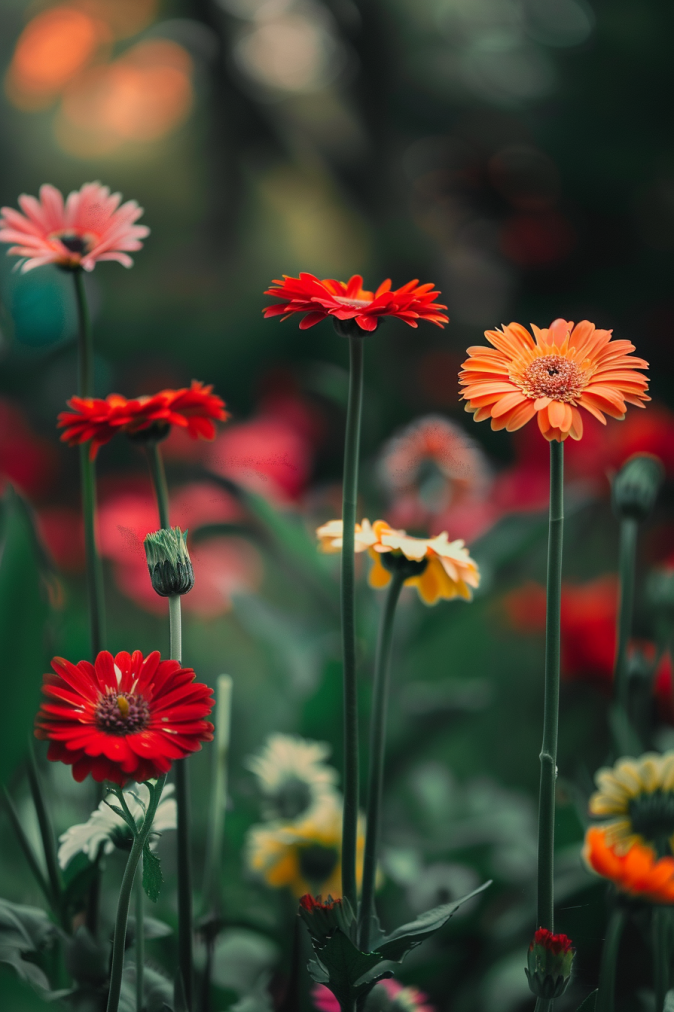
Conclusion
Embarking on the journey of growing gerberas can be a delightful and rewarding experience for gardening enthusiasts.
By gaining insights into the various types of gerberas, comprehending their unique growth needs, and mastering the art of caring for them, you have the opportunity to craft a vibrant and colorful garden display that will captivate and impress your neighbors.
Dive into this gardening adventure, and watch your gerberas flourish into a stunning showcase of natural beauty.
- Read also: A Guide to Growing Dipladenia Plants
- Read also: A Guide to Growing Croton Mammy



